TRANSFORM YOUR MEETING CULTURE
Gain clear insights into your meeting culture with tangible metrics ready for your reports and presentations.
Use our employee meeting add-ons to make meetings punctual, stay on agenda, and to create better business decisions - one invite at a time.
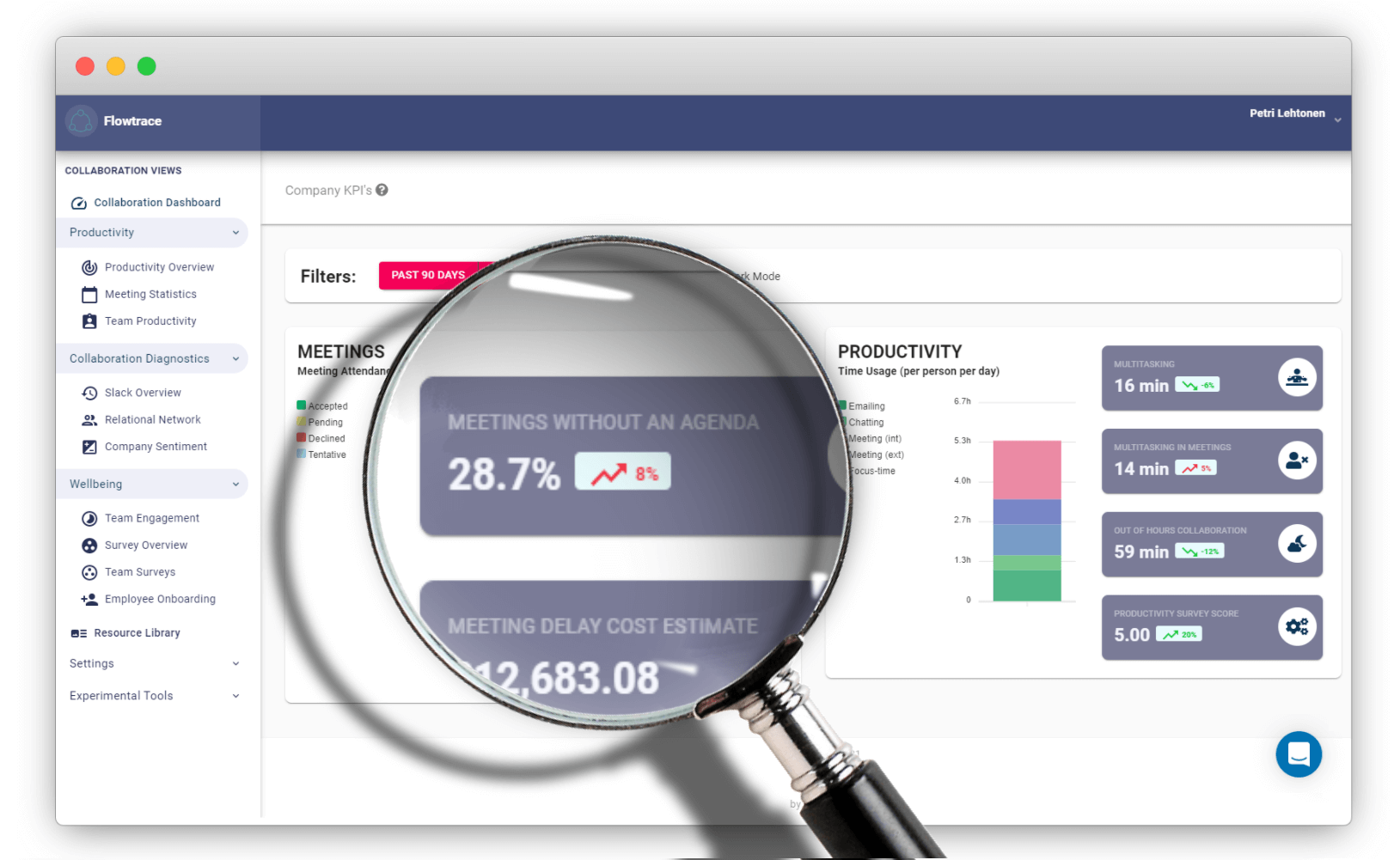



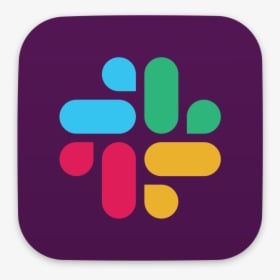
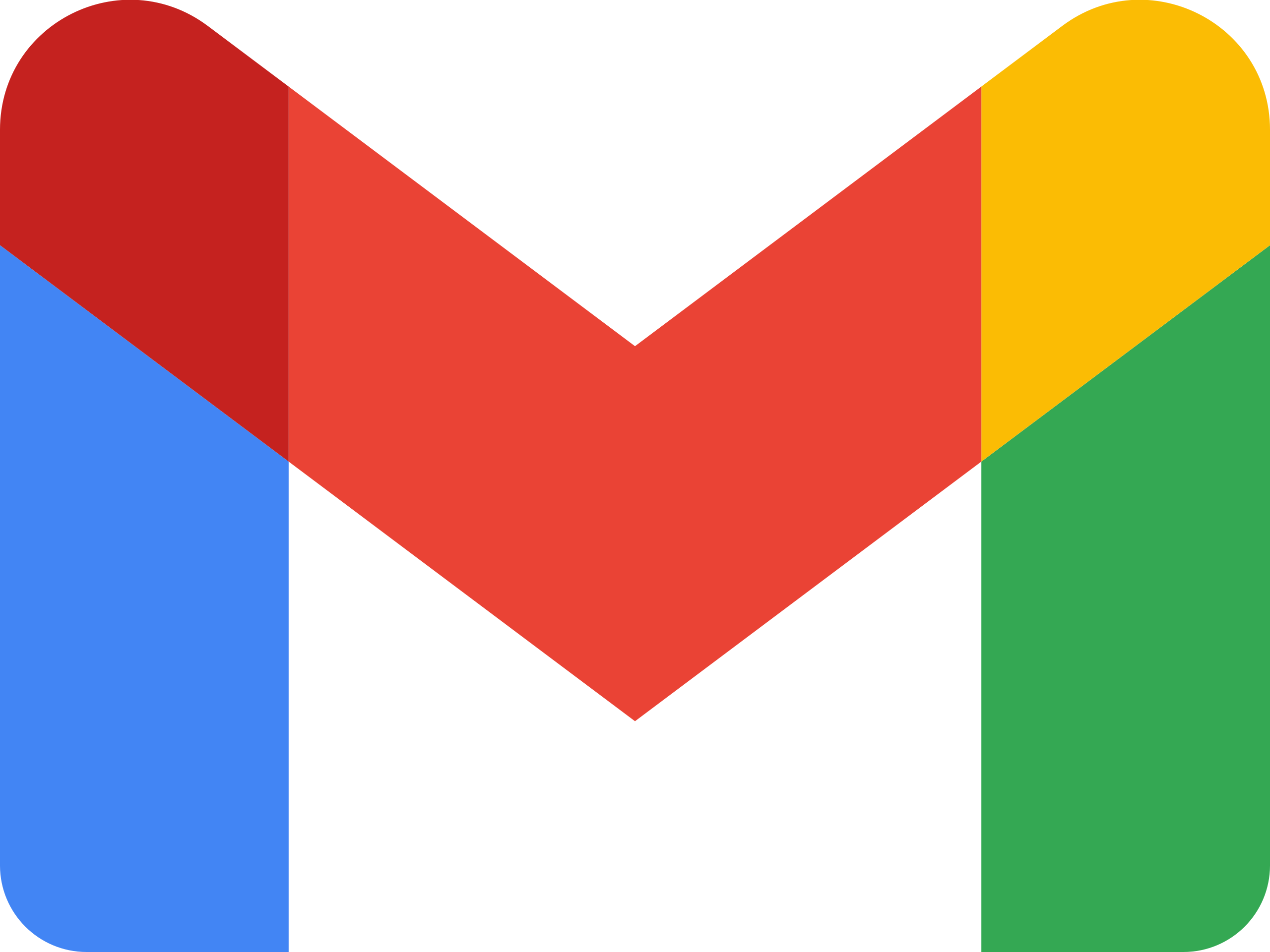

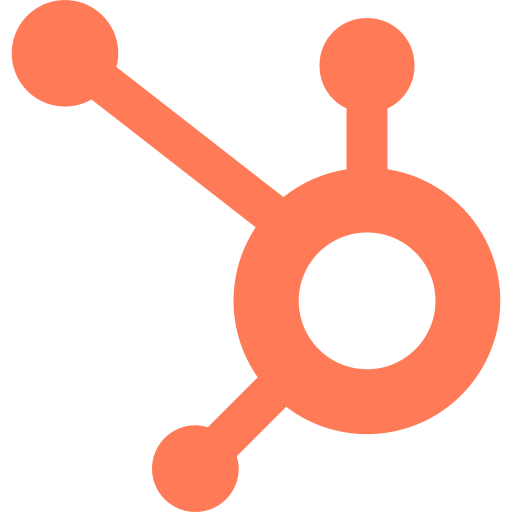


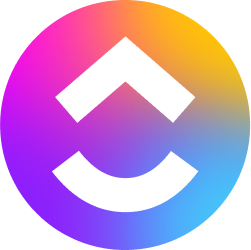
INTEGRATES WITH TOOLS OF HIGHLY EFFECTIVE TEAMS
We integrate with Microsoft Outlook, M365, Google Workspace, Google Calendar™, Zoom, and Google Meets™.
COST OF COMPANY MEETINGS
This meeting could have been an email?
✅ Meeting Costs by Team
✅ Total Cost of Meetings
✅ Meeting delay costs
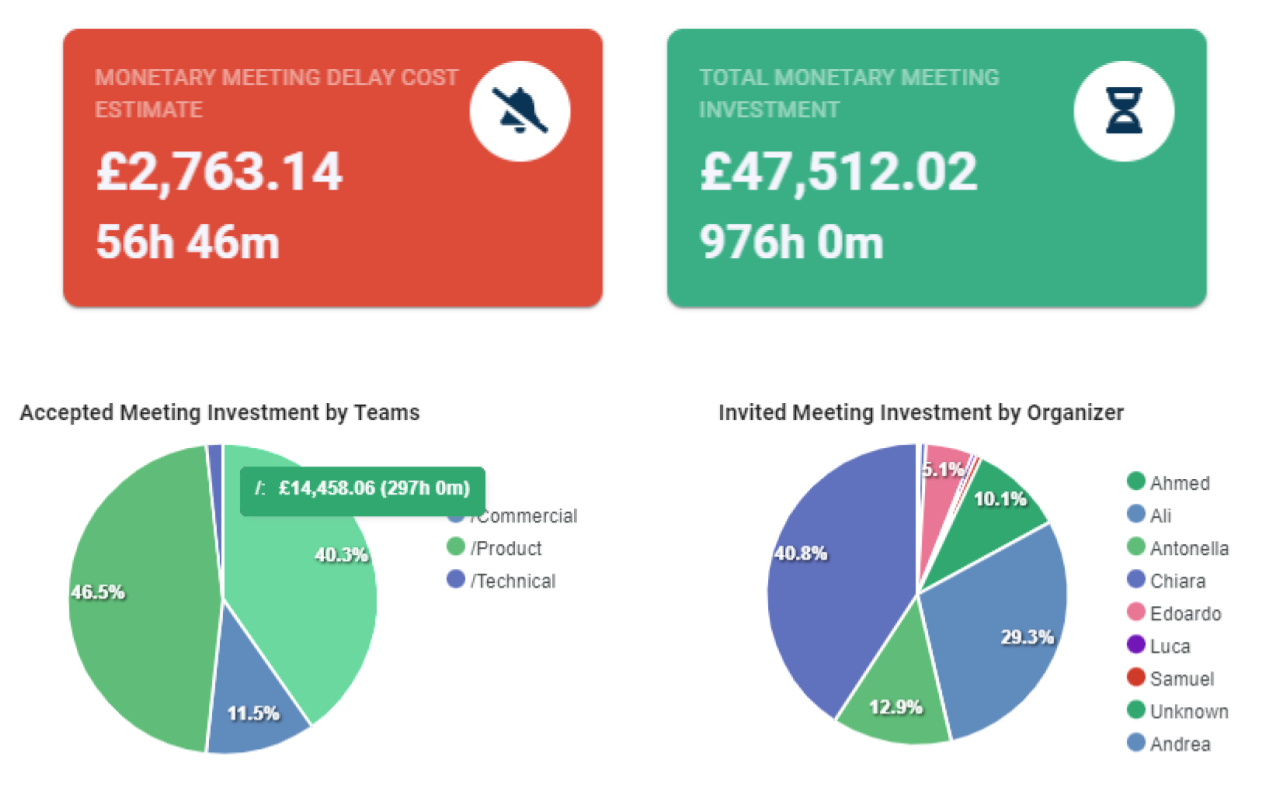
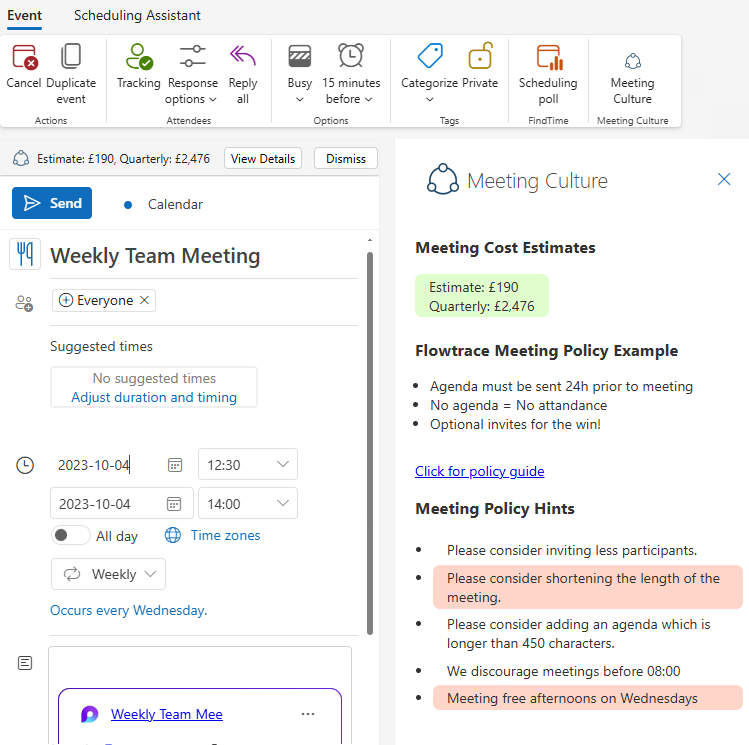
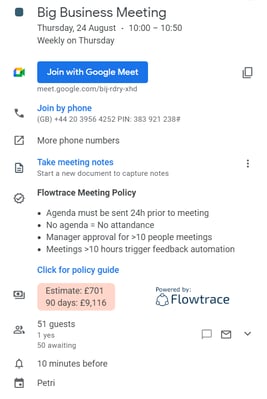
MEETING COSTS IN CALENDAR
Increase the mindfulness of meeting costs.
✅ Meeting Costs for Google Calendar and Outlook
✅ Secure company cost configuration
✅ Easy install across the team for enterprises
FOSTER PRODUCTIVE MEETING CULTURE
This meeting could have been an email?
✅ Agendaless meeting metrics
✅ Meeting cost and delay cost estimates
✅ Complete public calendar analytics
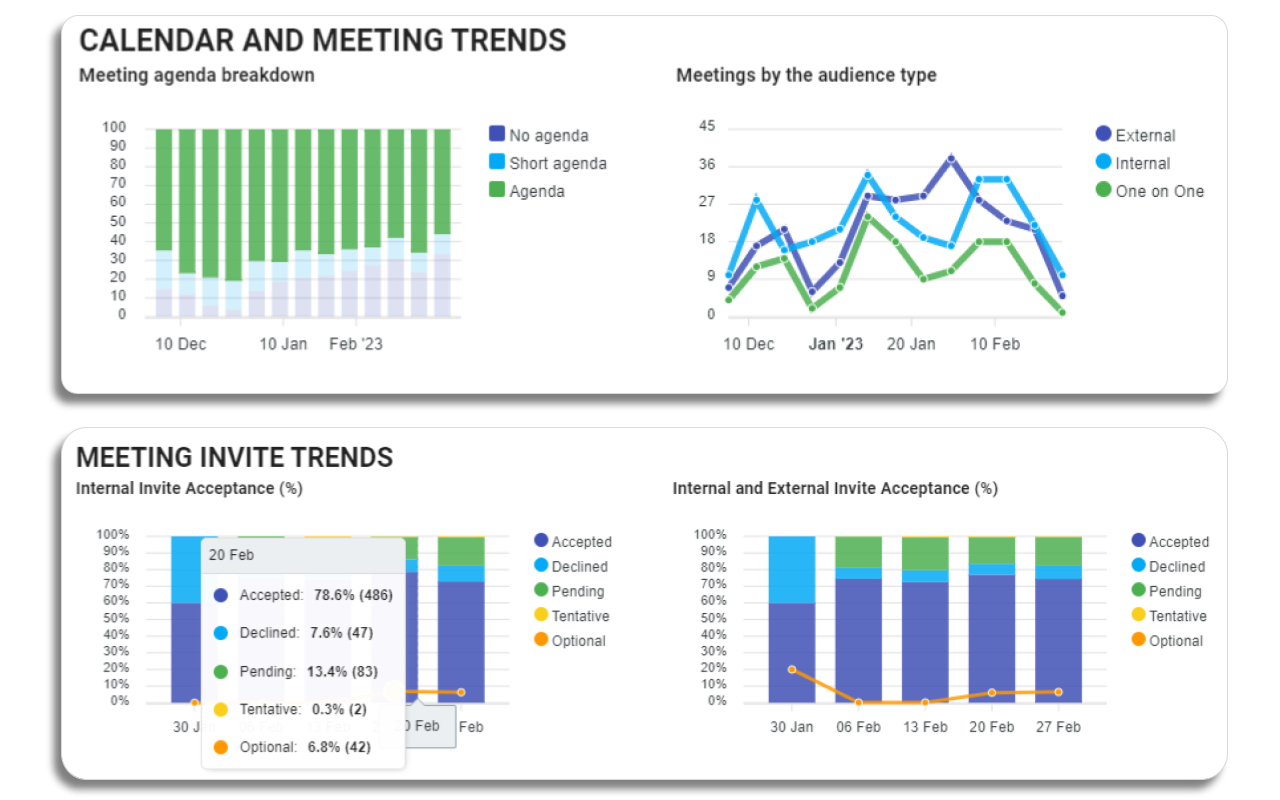
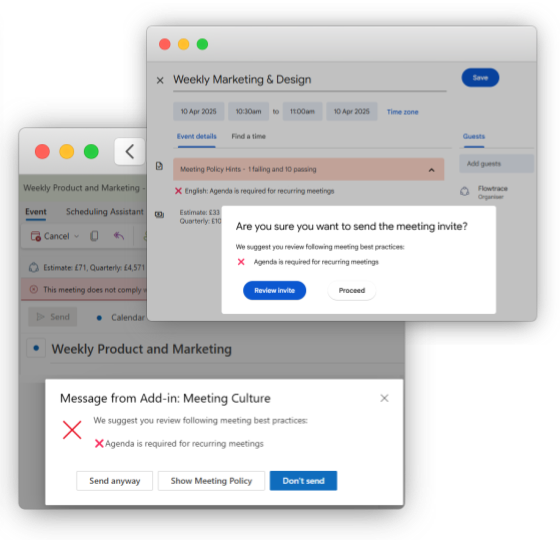
AUTOMATED MEETING INVITE VALIDATION
This meeting could have been an email?
✅ No more agendaless meetings
✅ Choose from 15 default rules or make your own
✅ Alert for expensive meetings before they are invited
RECURRING CROSS-FUNCTIONAL MEETINGS
Are my cross-functional meetings effective at decision making?
✅ Reveal the attendance of right people and teams
✅ Does the attendance meet the purpose and set goals
✅ Complete details for any meeting, recurring or one-off

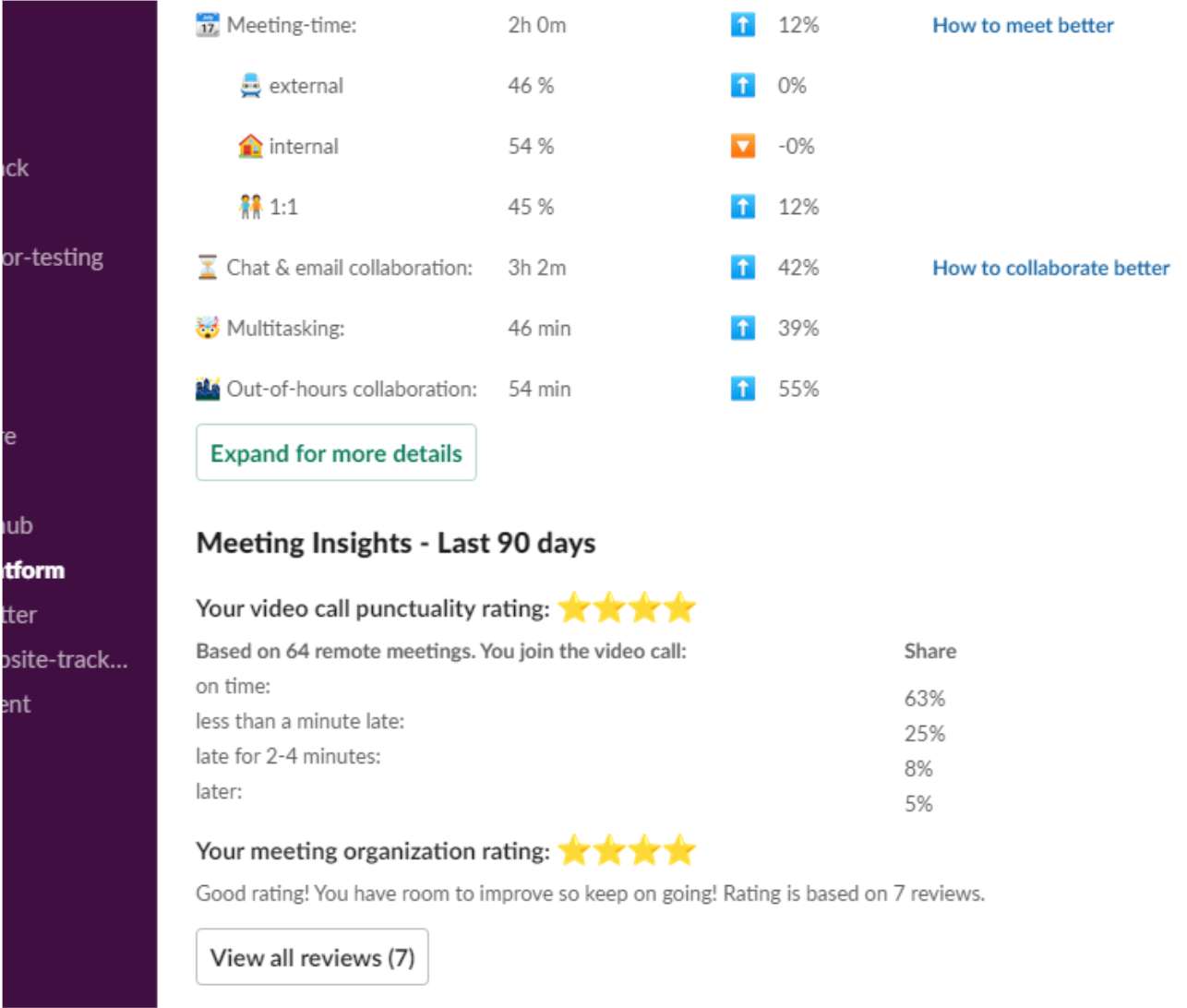
GAMIFIED FEEDBACK LOOPS
How can I help my teams improve our meeting habits?
✅ Gamified punctuality score for your employees
✅ Feedback loops for meeting organizer and attendees
✅ Meeting best practices and guides for self-development
INDUSTRY LEADING AI RECOMMENDATIONS
With our industry-leading AI, we identify what's hindering your team's collaboration and provide practical guidance for improvement.
✅ Actionable recommendations created from facts and employee opinions
✅ Industry benchmarks, new management metrics, and best practices
✅ Recommendations that you can verify with actionable "how to" instructions
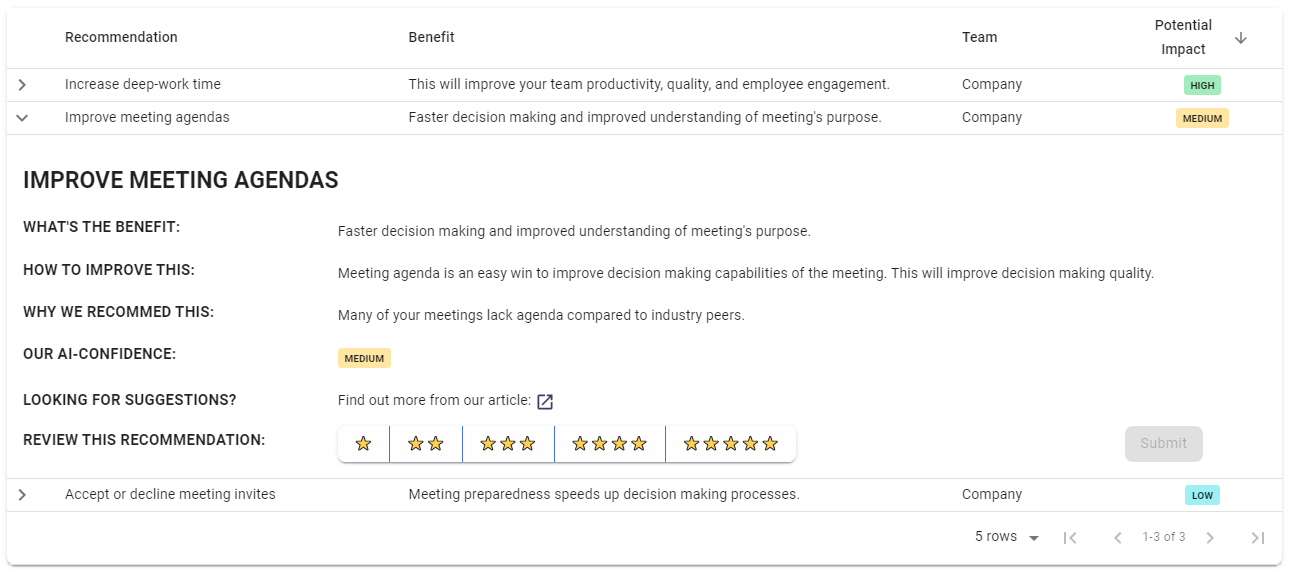
Who is Flowtrace for?
Flowtrace works with founders and leadership teams providing insights into whole organization. Our insights are used by every employee of the company:
- Leadership. You get core metrics and KPIs about your productivity, meeting culture, information silos, and communication patterns.
- Managers. You have full visibility into your team's time metrics, engagement and management pulse survey results, and how your team interacts with teams around you.
- Employees. Your team will benefit from personalized insights into their collaboration patterns, and meeting habits in secured, and private way that is only accessible for them via our Slack App.
Our insights are based on team level metrics which is proven to results into long-term productivity improvements, increased trust between your teams, and aligned strategical effors. We know there are tools which focus on individual monitoring which create exactly opposite effects.
Flowtrace doesn't have team size requirement. Our clients range from 5 to 100s of employees and benefit from the same productivity gains.
How long it takes to see business performance?
We often see our clients achieving quick wins in their first weeks of Flowtrace usage. Some long standing cultural changes can take months to rally everyone from the team behind the common goals. This is dependent on the starting situation of your company culture.
Is my data safe with you?
You data privacy, is our priority. We never store any sensitive information from your collaboration tools and create the insights from metadata of intentional collaboration events to minimize any risk of information leakage.
In all our workings we utilize software industry's best practices and we are open share and discuss any aspect of your security and privacy needs.
You can read more about our commitment to data security from here.
How personalized metrics help my team?
YOUR EMPLOYEES GAIN ACCESS TO THEIR OWN ANALYTICS SO THEY CAN OPTIMIZE THE WAY THEY PREFER TO WORK.
We provide every employee in-depth analytics about their work day and how they utilize their time. We support these with pragmatic best practice guides and self-help content.
The employee level view is 100% private to each individual and accessed using our Slack integration. These details are not available to anyone else, and are designed to give a factual view to each individual employee.
Our clients see instant improvement when they adopt our gamified scoring and review meeting insights. They are designed to empower your team members to control positive meeting culture factors such as punctuality, and meeting organization skills and reduce negative impacts of meeting overload and meeting multitasking.
Why cross-functional meetings are important?
Most organisations rely on meetings as an essential component of coordinating projects, work and teams, but inefficiencies in meeting best practice point towards massively growing sunk costs which now equates to nearly $500 billion globally in relation to the ‘lost productivity cost impact of poor quality meetings”.
When it comes to improving the effectiveness of your meetings, having the right calendar analytics is a great place start and set the tone for a more productive meeting culture.
“Meetings are a symptom of bad organisation. The fewer meetings the better” (Peter Drucker)
Meetings needn't be pointless. Successful internal meetings bring everyone together to check-in with one another and communicate challenges, actions and needs.
Why your meeting culture matters?
“MEETINGS AT OUR COMPANY ARE SO PRODUCTIVE, EVERY MEETING HAS AN AGENDA AND A CLEAR PURPOSE. I LOOK FORWARD TO EVERY COMPANY MEETING”.
When was the last time you heard that statement? We don’t think we ever have.
Poor quality company meetings has been a topic of debate for a long time, but still it seems business has not been able to turn the tide of poor quality company meetings into productive meeting practices, that become part of company culture and positively drive employee productivity and engagement.
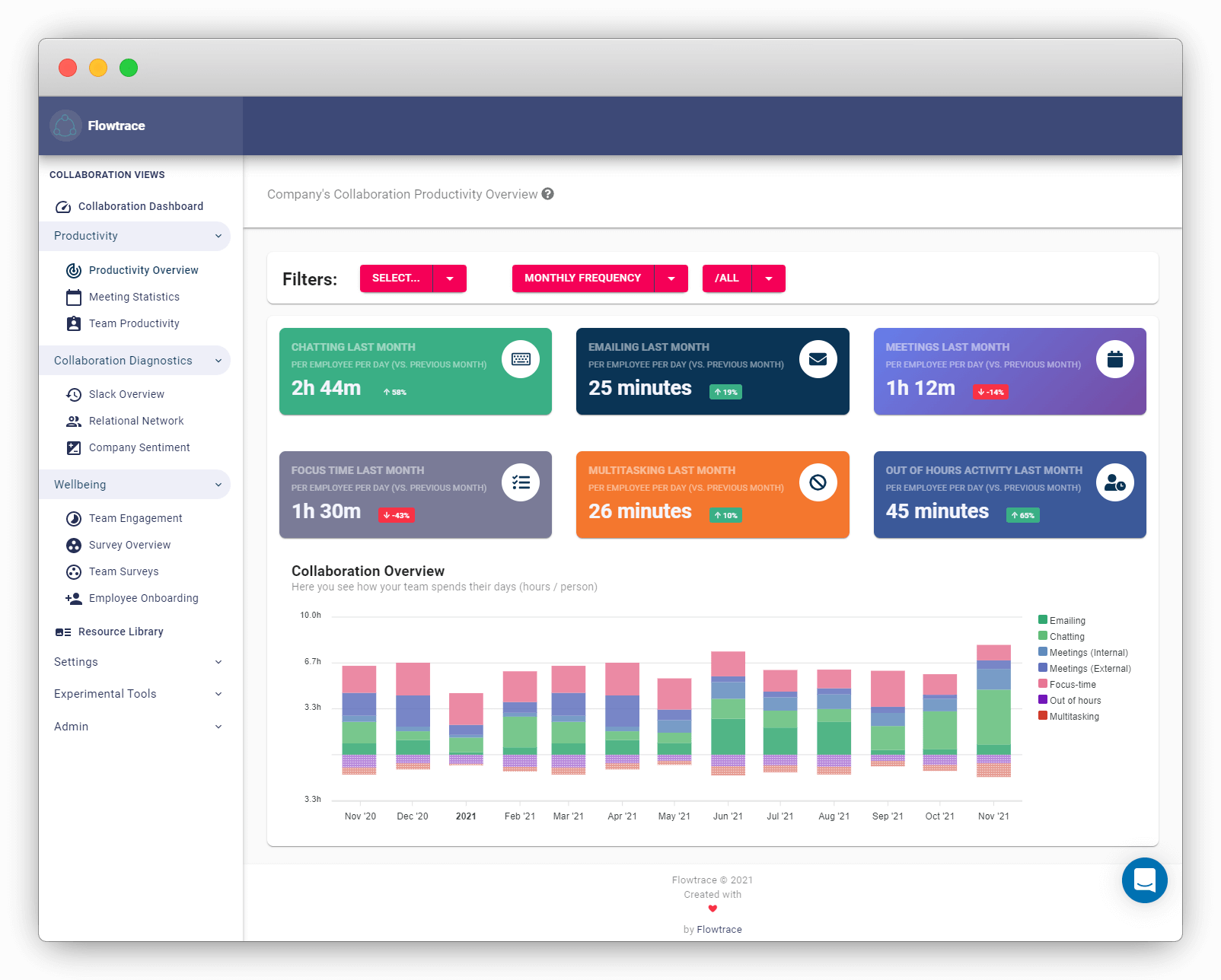
CREATE FREE ACCOUNT NOW
Experience Flowtrace in action with powerful collaboration tool integrations to super-charge your team productivity and collaboration effectiveness.